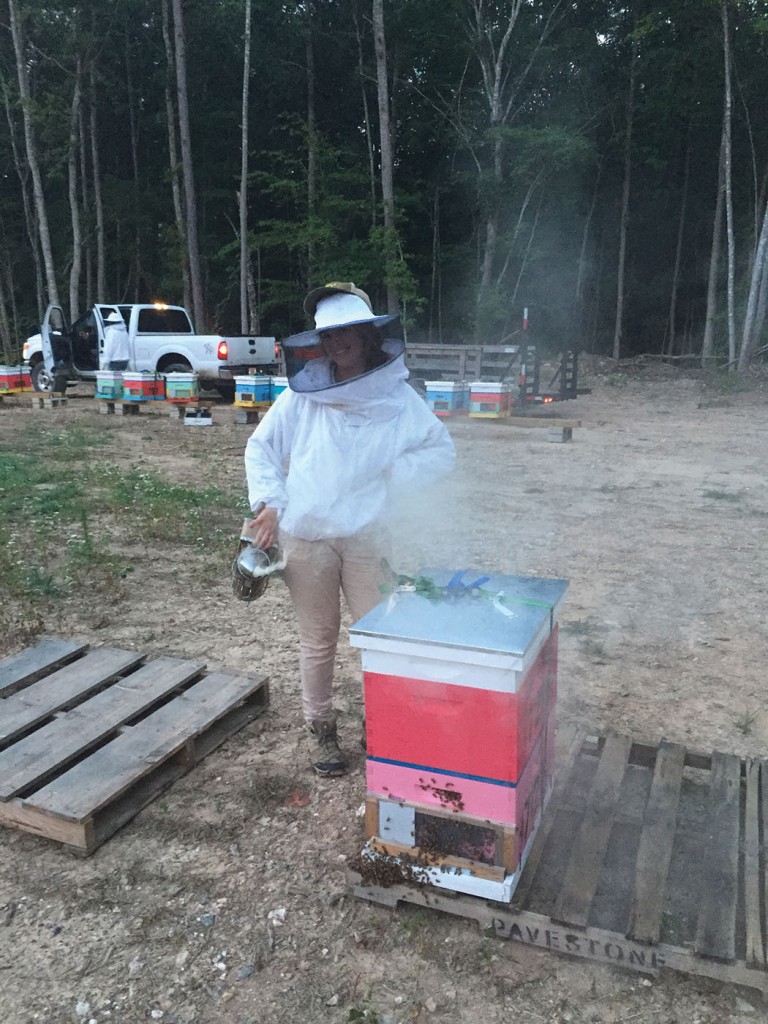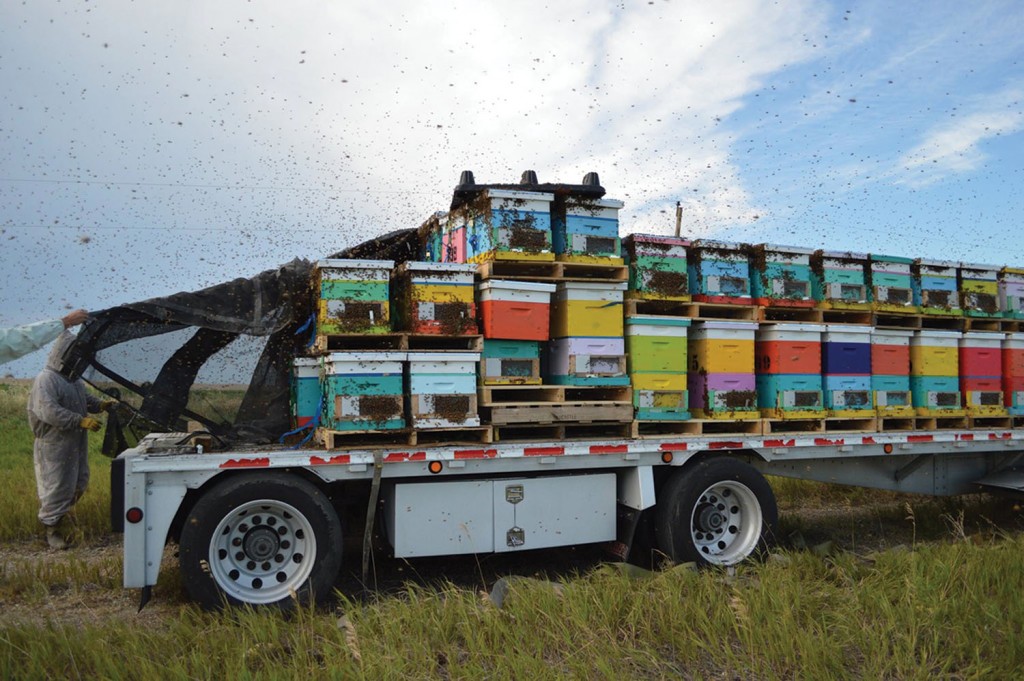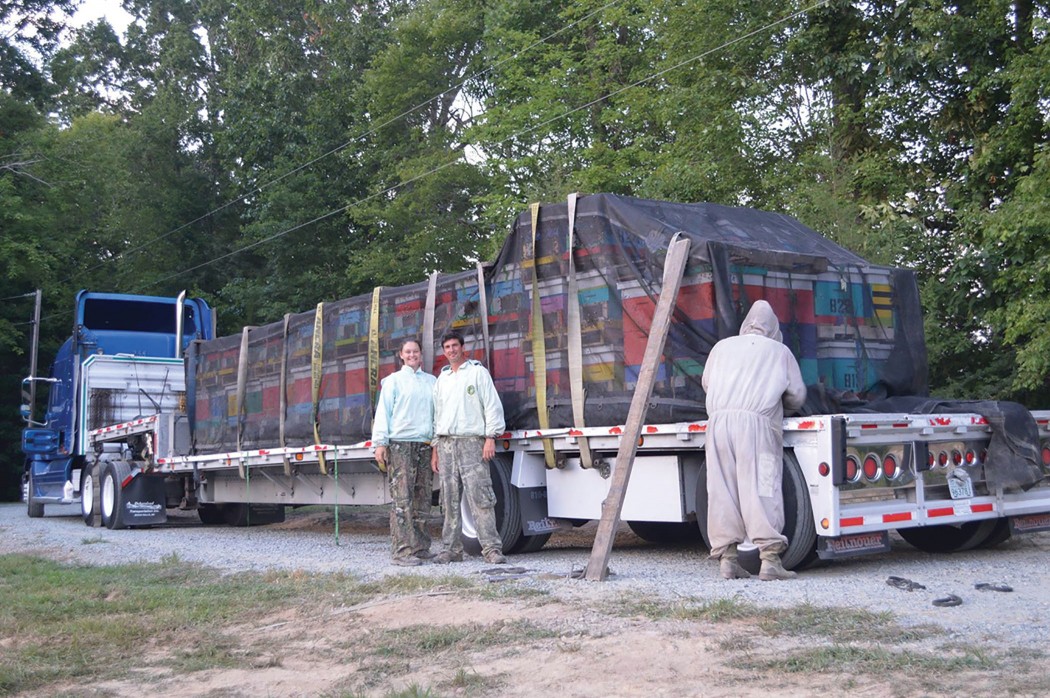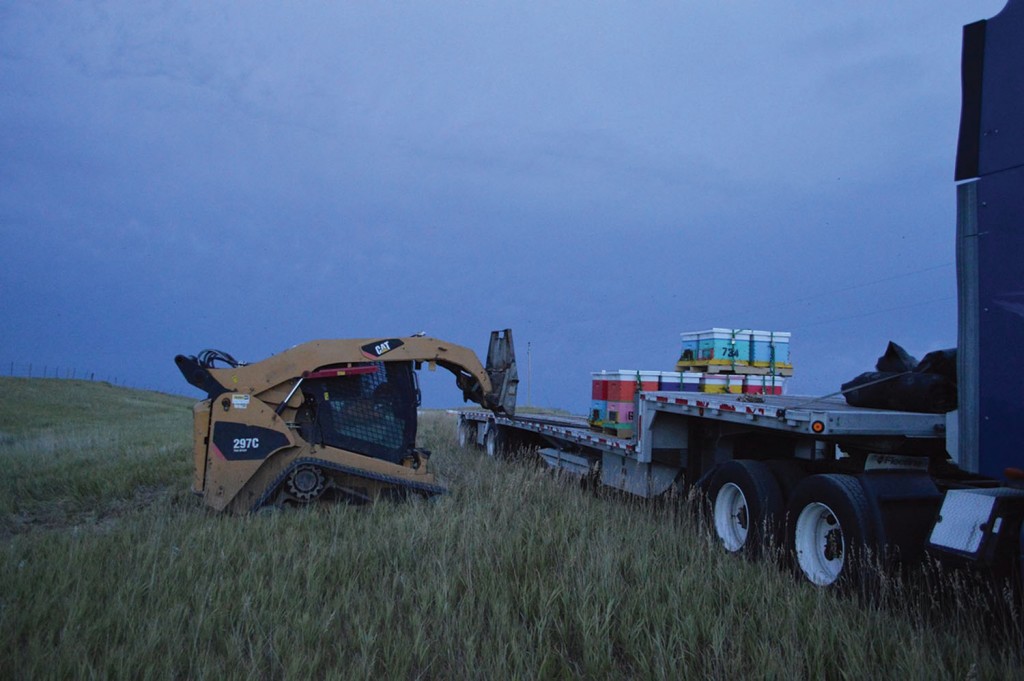by Jessica Louque
Recently, we’ve spent more of our time in the Dakotas than we have at our house. The kids have very nearly gone feral, digging through the freezer for pizzas and speaking incoherently at us (I guess really nothing new) for the few days we have had them instead of their grandparents. Our yard is a mess, our bees are hungry, the garden is neglected – but sometimes, you just have to hire a guy to move your bees around and chase them there.
We moved bees for work to South Dakota, and it was definitely a feat. We had some difficulty getting a truck to take our hives. We only wanted to ship around 120-150, which we were told was not a full load, and we’d have to pay full price. That was not a problem, but the issue of securing fewer pallets than the truck would hold was a concern. The logistics of moving hives is absolutely insane. I don’t know how commercial guys do it all the time, but I guess you get a rhythm going and you’re good.

Alison is cheerful even though she’s at work at what is now closer to 6:30 a.m.
Our job (that would be me and Bobby) was to un-ratchet each hive and re-ratchet it to the pallet. This is really a lot less fun than it sounds. I know this is what everyone dreams to do every day. Once we had our hives strapped to the pallet, we added a pallet on top to go ahead and double them up. It took us almost five hours to get the hives put on the pallets, strapped down, and then added on top. We had double deep hives on all the bottom pallets, and single deeps on top. We also had one pallet of triples, and then three leftover pallets of singles. Everybody also still had their top feeders on, so these were some fairly tall hives.
Once the hives were as ready as we could do, we did the round trip to my mom’s house to drop off Atlantis for the week, stop by a couple places for supplies, and head back to work to load the truck. Our driver, Chad, was ready to be there a little earlier than planned, which was super awesome for us. The forklift driver didn’t live too far away, so he was happy to come out early too. It only took about an hour to load the truck, which turned out to be a full load since we had doubles and triples. Chad definitely knew what he was doing.

The bees finally arrive in South Dakota, and they are not excited about travel.
We also learned from Chad that you need to twist the big trucker straps that cover the top of the hives so that the wind doesn’t vibrate them right into the hives. I didn’t really like not having them straight because it wasn’t pretty, but he was making a lot of sense and I’m sure he knew how to do his job without me telling him what looks better. He did fast work putting on the mesh, tightening his ratchets, putting on planks to keep the lines straight, and there may have been some bungee cords in there somewhere. I have an irrational (or maybe rational, depending on how you look at it) fear of bungee cords because I had one crack into my face in my second week of grad school and cause a hairline fracture in my eye socket. It’s a natural reaction for me to remove myself from a situation involving bungees now, so I vaguely think he used them and I went away. Once it was done, we did a really clumsy bill of lading, which I still don’t quite understand but I think I figured it out. It’s now dark out, so we tell Chad to have a safe trip, he wishes us the same, and we follow him out to the interstate.
In South Dakota, there’s only really two regional airports that can bring you in for a reasonable cost. For this trip, we didn’t use either one and ended up flying into Fargo because we needed to check on our bees up in North Dakota, then drive down to South Dakota. We had enough time to check out the area and our locations before Chad arrived promptly at 7:00 p.m. just as promised. We had our second forklift driver arranged, got our bees down to the drop site, and started unwrapping the truck (that would be Bobby, not me). I’ve worked with some nasty bees before, but our sweet southern bees had turned into raging death machines on the drive up. Just the sheer numbers of bees everywhere was enough to cause a bee-nado (better than the more common tornadoes in the area). They were doing their best to sting through the veils, and you couldn’t have any exposed skin. I know Bobby had 15 or 20 stings in his hands before he finally borrowed a pair of gloves from Chad. There were also some swarming issues, which I would assume were just par for the course with the anger, close proximity to other bees, vibration from the road for two days, etc. It certainly didn’t make them any happier.
Our forklift driver fortunately had a closed cab, and seemed to be totally happy not coming out. He did a great job pulling the pallets off the truck. Unfortunately with the anger management issues going on in the bees, a storm started rolling in when they were about halfway unloaded. You could feel the angry go up a notch with every crack of lightning in the distance. When the bees were all on the ground, we thanked Chad, who was sitting in his truck with the bee suit still on, and watched the other guy load his forklift onto his trailer about a half a mile or so from the bees, where he proceeded to receive four stings to the face. He may not help us again in the future, but I guess I don’t blame him.











